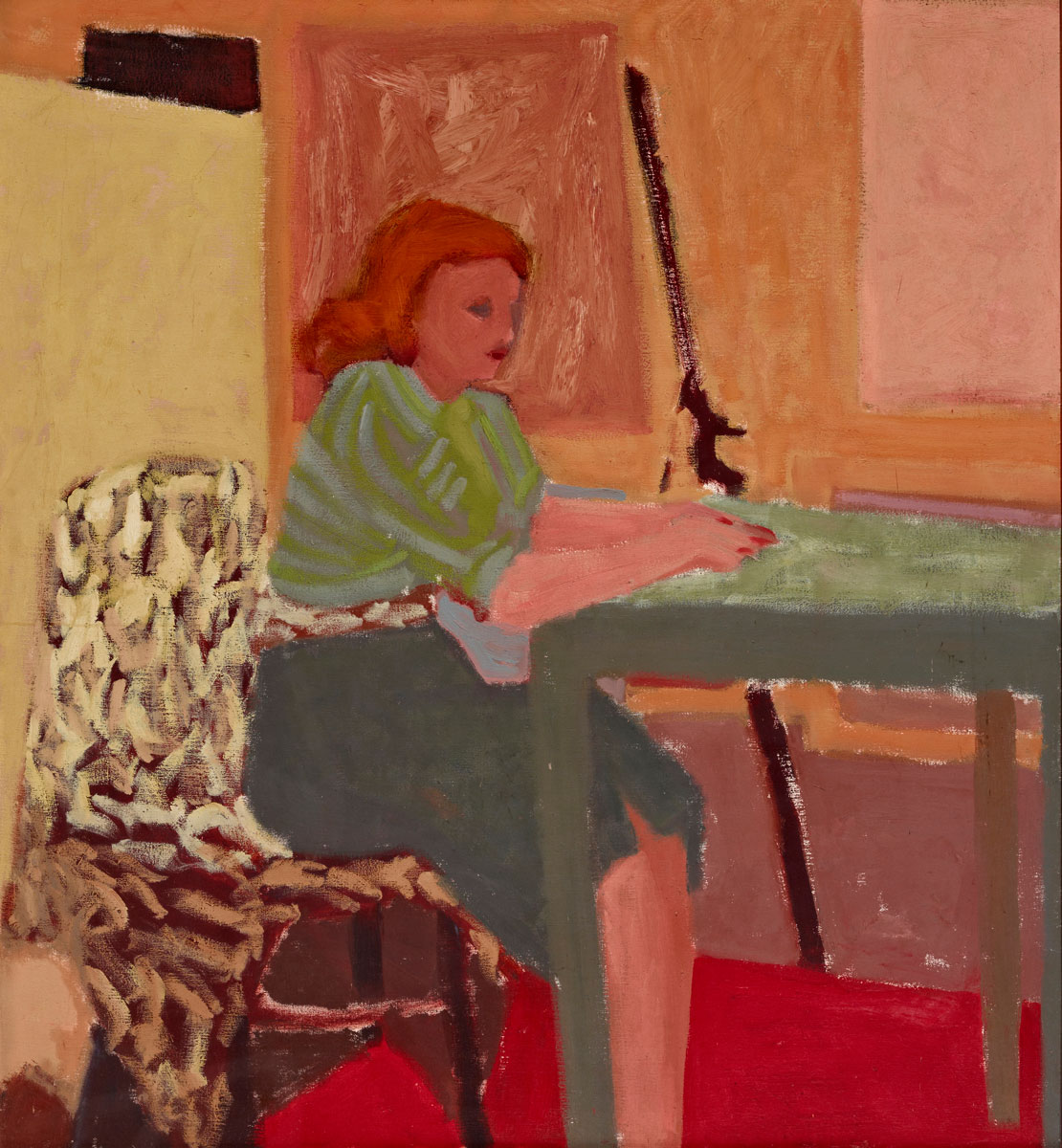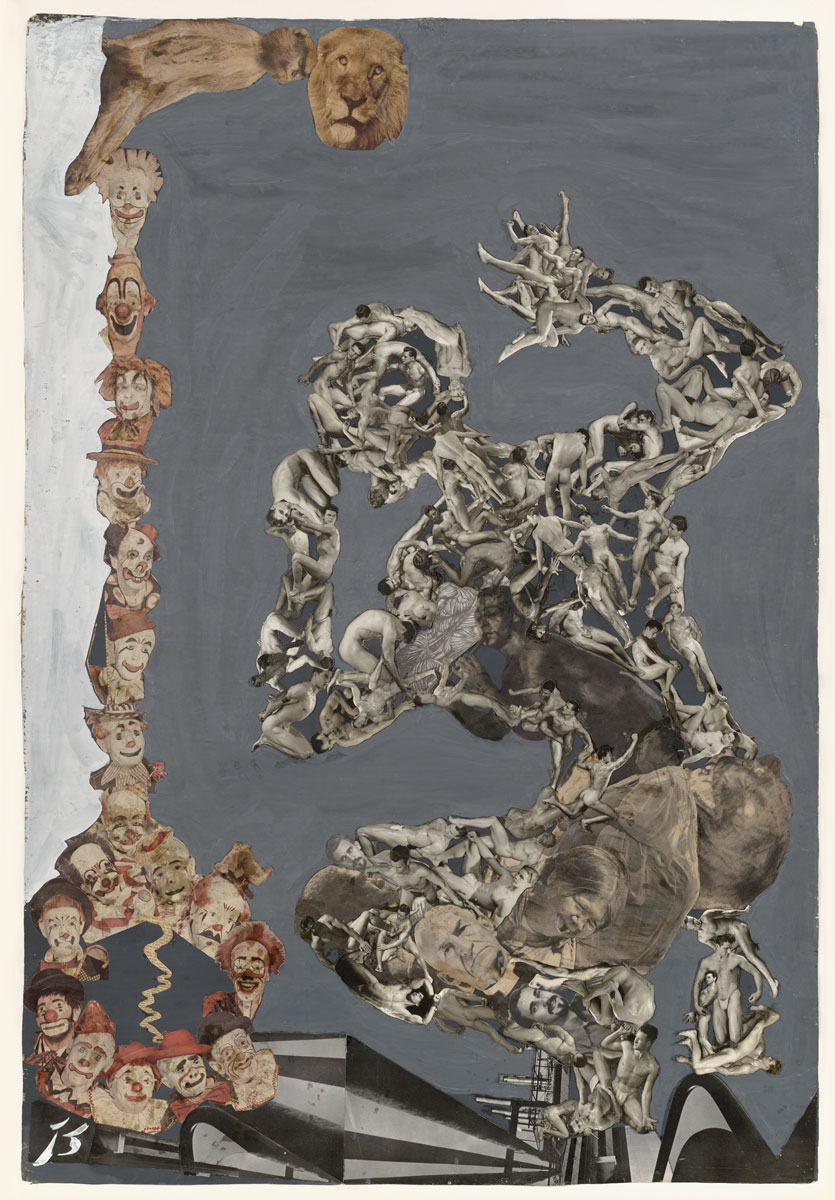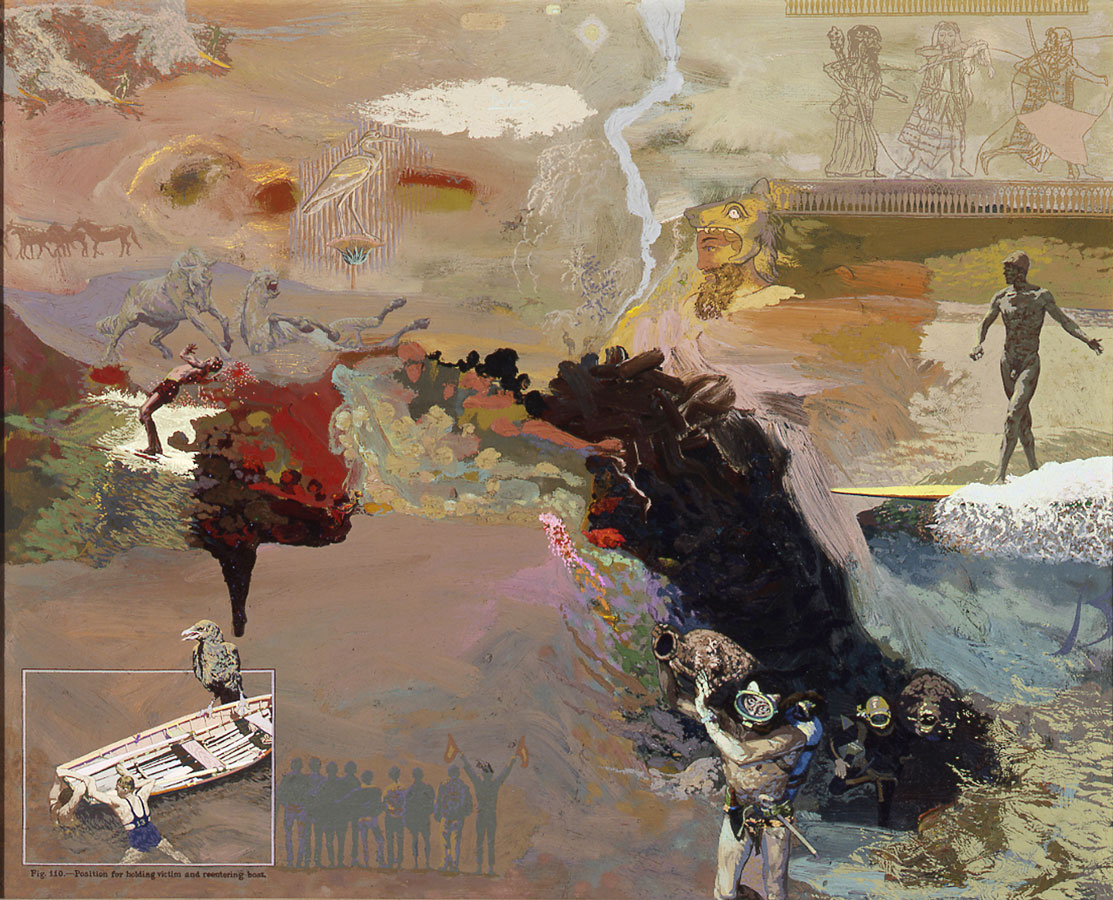“To me, colors are colors and they arrive in the painting for the sake of the painting, and not for my intellectual sake. I don’t set out to develop a particular meaning to come forth. The meaning appears as the painting thinks itself into being.”
from “An Interview with Jess” by Michael Auping
in Jess: A Grand Collage, 1951-1993
Non-objective & Romantic Paintings
Some of Jess’s early works show the influence of his teachers, including Elmer Bischoff, Edward Corbett, David Park, Hassel Smith, and Clyfford Still. Later, throughout the 1950s and 60s, he produced over a hundred canvases evoking mythic, enchanted landscapes, many including figures. These often visionary paintings have been increasingly appreciated in recent years.
Ex. 1 – Laying a Standard: Translation #1
1959, oil on canvas, 23.5 x 15 inches
Tibor de Nagy Gallery
“The sense of complete concentration and reverence of the world as it exists is among the signal characteristics of Jess’s art, second only to his absolute faith that material and meaning can be brought into an illuminating alignment.”
Roberta Smith, art critic, NY Times, Sept 23, 1994
Translations
Between 1959 and 1976 Jess worked on a series of thirty-two “Translations,” faithful reproductions in oil paint of a variety of found images including engravings, photographs, artworks and illustrations. Each work includes fragments of literary text, either integrated into the painting or written on the back.
The Mouse’s Tale
1951, gelatin silver prints, magazine reproductions, and gouache on paper;
47⅘ x 32 inches
San Francisco Museum of Modern Art
Gift of Frederic P. Snowden
“This quality of existing in time as well as on the page is what distinguishes Jess’s work from that of other collagists and makes him a great artist.”
John Ashbery, poet, “Prologue”, To And From The Printed Page, ICI, 2007
Paste-Ups
Jess’s earliest collages, which he preferred to call “paste-ups” for the association with childlike play, date from 1951. Combining magazine illustrations, comic strips, engravings, Tarot cards, and eventually puzzle pieces, the paste-ups grow more complex with time, the later examples containing hundreds or even thousands of fragments. Visual and verbal puns organize the intricacies, as the viewer’s attention is drawn inward to Jess’s constellations of myth and imagination.
“Jess was extremely gentle, totally unpretentious, curious, and extremely original. He had quite an impact on other artists. Of the generation of post-World War II artists in San Francisco, Jess may well emerge to have been the best of the bunch.”
Harry Parker, former director of the Fine Arts Museums of San Francisco, quoted by Michael Rogers in Caltech News, Volume 41, Number 4, 2007
Salvages
For his Salvages series, nine paintings in all, Jess recycled his own saved older canvases and found thrift shop paintings. Like the Translation series, each image is accompanied by a literary text that is not directly interpretative but intended to elaborate the potential meaning of both text and painting.




